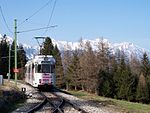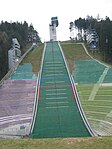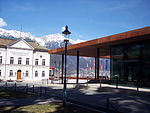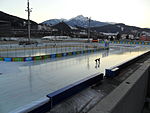Tiroler MuseumsBahnen

The Tyrolean Museum Railways or Tiroler MuseumsBahnen (TMB) is a railway society in Austria whose aim is the preservation and/or documentation of the historically important branch lines (known as Localbahnen) and their rolling stock in the state of Tyrol. The Tyrolean Museum Railways have three main spheres of operation: The Tyrolean Localbahn Museum (Tiroler Localbahnmuseum) in Innsbruck A collection of rolling stock that includes some of the most valuable, historic vehicles from the Tyrolean branch lines A club whose members voluntarily run the Localbahn Museum, restore and renovate historic vehicles and restaurieren operate special trips using working trains.
Excerpt from the Wikipedia article Tiroler MuseumsBahnen (License: CC BY-SA 3.0, Authors, Images).Tiroler MuseumsBahnen
Pater-Reinisch-Weg, Innsbruck Wilten (Wilten)
Geographical coordinates (GPS) Address Nearby Places Show on map
Geographical coordinates (GPS)
| Latitude | Longitude |
|---|---|
| N 47.252778 ° | E 11.398056 ° |
Address
Innsbrucker Verkehrsbetriebe
Pater-Reinisch-Weg
6020 Innsbruck, Wilten (Wilten)
Tyrol, Austria
Open on Google Maps











